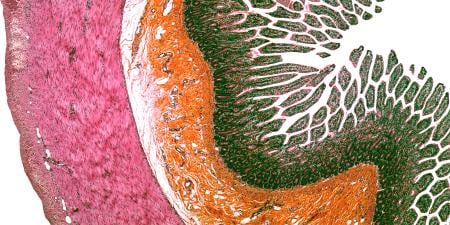Case
Mr. Johnson had been battling cancer for as long as he could remember. At 65 years old, he still remembered the day when he was first told that he had prostate cancer at the age of 45. The past 20 years had been one struggle after another, each with its own twist. Most recently, Mr. Johnson had been diagnosed with metastatic cancer in his lungs, spine and brain. Years of illness had made his body fragile and frail. Even the smallest everyday tasks seemed nearly impossible. Pain seemed not to radiate from any single point but rather to encompass his entire body. The mere act of breathing now seemed an insurmountable task, one that caused excruciating pain and increased his hunger for oxygen. He had tried every analgesic that had been offered and seen palliative specialists from across the country. None had been able to offer him any real relief from his pain. Recently Mr. Johnson confided to Dr. Jackson that he was considering suicide as a way out of his pain, but Mr. Johnson was a religious man and was afraid of the consequences he might face in the afterlife.
Dr. Jackson, an anesthesiologist at St. Luke's, believed he might be able to help. "Mr. Johnson, none of the medications we have tried in the past has been able to alleviate your pain. What I suggest may be quite extreme, but it is most likely the only means that will give you any relief and put your conscience at ease. I believe that by placing you in a chemically induced state of unconsciousness, similar to that of a comatose individual, you will be free from your pain." Mr. Johnson was in so much pain that he was willing to try anything. After much deliberation and reflection, he agreed to the procedure. In Dr. Jackson's judgment, the patient possessed decision-making capacity sufficient to provide informed consent. Prior to undergoing the induction, Dr. Jackson broached the subject of what other care and life-sustaining measures Mr. Johnson wanted taken while he was sedated.
"Several options exist for your care while you are in this state," Dr. Jackson explained. "One of these is the means by which we may provide nutrition and hydration. Since you will be unable to eat normally, we can feed you through a surgically inserted tube. Would that be something that you would want?"
Mr. Johnson thought carefully about this offer. "Am I right in presuming that the last few weeks I have to live will be spent in this unconscious state and that I will not awaken?" Dr. Jackson replied affirmatively. "Then I don't see the point in prolonging the inevitable by having the artificial nutrition and hydration. I'm not going to feel anything, right? Let me go when the time comes."
The next day Mr. Johnson was sedated into unconsciousness. Several days passed, and Mr. Johnson's medical condition began to deteriorate due to dehydration. Eventually Mr. Johnson's body went into multi-organ failure. It was at this point that another member of the staff, concerned with the course of events, informed not only the hospital administration but also the local bishop, claiming that this act was directly contrary to the Catholic mission of St. Luke's Hospital. The local bishop responded promptly to the hospital administration, clearly stating his deep disapproval of recent events and demanding reconsideration of Mr. Johnson's care. The alternative, he claimed, was to institute a review process that could revoke St. Luke's Catholic identity and its ability to claim a religious affiliation. This seemed to the bishop to be a case of assisted suicide, if not out-and-out euthanasia.
Dr. Jackson had become dismayed at these turns of events. Suddenly, many serious thoughts began to bear down on him: the patient's proper care in a situation of true intractable pain, the patient's stated wishes, Dr. Jackson's own faith, the divided sentiment of the staff, and the identity and mission of St. Luke's Hospital. Knowing that events were only going to become more tense tomorrow, Dr. Jackson slept little that night as he considered his options.
Commentary
A good death is of great value, but defining a good death is, of course, no small task. Whatever else it involves, the absence or minimization of pain seems to be a part of it. The palliative care movement has been instrumental in bringing attention to the experience of pain at the end of life and developing tools to lessen it. For the most part, those within the Catholic moral tradition have welcomed this focus on pain relief. The practice of what is sometimes called "terminal sedation," however, represents the point where Catholic thought and palliative care may part ways. The clinical vignette presented here provides an opportunity to explore why.
The term "terminal sedation" lacks precision [1]. In a general sense, it involves producing sedation in a patient, typically with medications, that ultimately leads to death. Terminal sedation has a wide scope; it can run the gamut from treating intractable localized pain in the imminently dying with medications that happen to secondarily hasten death all the way to treating intractable suffering (broadly defined) in the nonimminently dying by inducing a state of decreased awareness in which patients, forgoing nutrition, ultimately die.
It should be of no surprise then that the range of actions that fall under the terminal sedation umbrella engenders different levels of moral concern. Situations such as sedating a patient who is dying from graft-vs-host disease and has severe abdominal pain from intestinal ulcerations has become a relatively common and uncontroversial part of the practice of palliative care. Let's call this the "near" end of the spectrum. It is actions at the opposite, or far, end of the continuum that are the subject of intense controversy [2]. A patient with slowly progressing amyotrophic lateral sclerosis (ALS) who requests sedation rather than a PEG (feeding) tube and an assisted breathing device is an example. Should the request be granted only if the patient is imminently dying? How is "imminently dying" defined? Is sedation an acceptable treatment for any kind of suffering? For all kinds? Does sedating someone who has refused nutrition and hydration merely ease the dying process or actually contribute to it?
Such concerns invite the following question: Does the far end of the terminal sedation spectrum represent the rational extension of uncontroversial practices at the near end (practices to which our intuitions just need to adjust), or does the far end represent instead a different kind of action which our intuitions rightly identify as problematic and which needs more thoughtful justification? One way to understand recent Catholic thought on this point is to think of it as motivated by a belief in the latter (that these actions are problematic) and by a desire to provide conceptual tools understandable outside the tradition for elucidating the needed justification.
The rule of double effect provides an example of just such an accessible tool. The rule of double effect originates in the Catholic theological tradition [3], but it has been applied in recent medical, philosophical and legal literature as well [4-7]. It is used to highlight the importance of intent when judging actions as either good or bad. According to the rule of double effect it may be impermissible to intentionally bring about a harm as a means to achieve some good end, but it may be permissible to bring about a harm as a mere foreseen but unintended consequence of pursuing that good end.
Put into the context of our case, it may be permissible to offer sedation that happens to speed the dying process if what one is aiming at is effective pain relief. It is not permissible, however, to offer sedation as a means of relief from the burden of consciousness. This would be to aim for, rather than merely to foresee, a hastened death. The application of the rule of double effect deserves much greater nuance than I have given it here [3,8], as does criticism of it [9,10]. My aim here is to show how the rule provides a relatively straightforward way of ethically parsing the practice of terminal sedation.
The case of Mr. Johnson unfortunately does not fit neatly into the spectrum of scenarios I have presented. Mr. Johnson seeks relief of intractable pain and presumably, were this to be available to him, would want to continue to live until he died of his underlying disease. He does not seem, for instance, to be motivated solely by a desire for control over the timing or manner of his death. He does not want to slip into an unconscious state because this is not the life (or death) he envisioned for himself but instead because his experience of pain has become overwhelming.
Dr. Jackson's approach to Mr. Johnson's condition, however, raises a question about whether pain relief is really all that is being sought. It seems that Dr. Jackson's decision to forgo attempts to titrate sedation or anesthesia as a means of pain control that stops short of inducing unconsciousness at least raises the question of whether relief of Mr. Johnson's current pain rather than relief of his current situation is really what is being pursued. Thus, the approach jointly taken by Mr. Johnson and Dr. Jackson would seem to fall fairly close to the far end of the spectrum and, hence, to run afoul of the rule of double effect.
A controversial practice like terminal sedation creates unique problems for religious institutions involved in the provision of health care. Catholic institutions have been able to avoid, often by carefully created structural divisions and partnerships with other health care centers, participation in practices like abortion, contraception and assisted reproduction. End-of-life treatment, like terminal sedation or withdrawal of artificial nutrition and hydration, is in some ways more complicated for Catholic institutions, given that care of the dying is more intimately woven into the daily practice of acute medical care. While it may be acceptable to transfer patients pursuing elective abortions to other hospitals, transferring acutely ill patients to other facilities to receive their desired end-of-life care is less obviously so. Spelling out roles for those working in this field, like Dr. Jackson, is an ongoing challenge for Catholic hospitals.
Controlling pain at the end of life is essential to good medical care. Given the complex interplay of pain with other aspects of human life—suffering, values and faith—it is not surprising that medicine continues to struggle with finding its proper place in treating pain. The practice of terminal sedation in many ways represents the cusp of this struggle. Its definitional boundaries and acceptable practices are still in flux. The rule of double effect at least provides an accessible resource for conceptualizing this evolving practice.
References
- Jansen LA, Sulmasy DP. Sedation, alimentation, hydration, and equivocation: careful conversation about care at the end of life. Ann Intern Med. 2002;136(11):845-849.
- Quill TE, Lo B, Brock DW. Palliative options of last resort: a comparison of voluntarily stopping eating and drinking, terminal sedation, physician-assisted suicide, and voluntary active euthanasia. JAMA. 1997;278(23):2099-2104.
- Boyle J. Medical ethics and double effect: the case of terminal sedation. Theor Med Bioeth. 2004;25(1):51-60.
- Miller FG, Meier DE. Voluntary death: a comparison of terminal dehydration and physician-assisted suicide. Ann Intern Med. 1998;128(7):559-562.
- Cherny NI, Portenoy RK. Sedation in the management of refractory symptoms: guidelines for evaluation and treatment. J Palliat Care. 1994;10(2):31-38.
- Quinn WS. Actions, intentions, and consequences: the doctrine of double effect. Philos Public Aff. 1989;18(4):334-351.
-
Vacco v Quill. 117 S Ct 2293 (US 1997).
-
Sulmasy DP. The use and abuse of the principle of double effect. Clin Pract. 1996;3:86-90.
- Quill TE, Dresser R, Brock DW. The rule of double effect—a critique of its role in end-of-life decision making. N Engl J Med. 1997;337(24):1768-1771.
- McIntyre A. The double life of double effect. Theor Med Bioeth. 2004;25(1):61-74.



